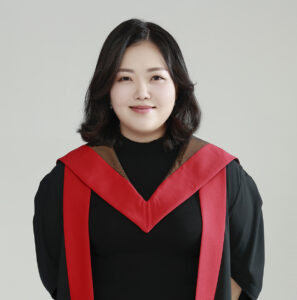Dr Hye Ri Choi is a postdoctoral fellow at the University of Hong Kong. She earned her PhD from the University of Edinburgh in 2021. Dr Choi’s research focuses on qualitative approaches in the fields of palliative care and critical care
One of my clinical experiences in a South Korean intensive care unit (ICU) that prompted me to pursue doctoral study in Edinburgh was witnessing the undignified dying and subsequent death of a patient. One evening, at the beginning of my overnight shift, I received a call that a patient, who had been resuscitated from cardiac arrest at the cancer care unit, was ready for intensive care. The patient was a terminally ill female in her mid-20s, with metastatic cancer. She was only two years older than me. Upon arrival in the ICU, the patient was assigned to me and was immediately resuscitated and returned to consciousness. She began expressing her pain to the clinicians, “Please, let me die,” was repeated conveying her intense suffering. It is important to note that her admission to intensive care and ongoing resuscitation were a result of her parents’ persistent requests. However, it took several hours for the parents to finally agree to discontinue the constant resuscitation efforts since her arrival in the ICU. It was such a brutal and painful memory of witnessing aggressive care and treatment given to a patient dying in pain. The experience motivated me to study and research end-of-life in a critical care setting.
In the almost decade since I moved to academia in 2015, my experience has become outdated. Accordingly, the decision-making process on a patient’s dying and death has changed. Especially, the Hospice, Palliative Care and Life-sustaining Treatment Act was enforced in South Korea in 2018 1 which provides a legal framework for decisions on withdrawing life-sustaining treatment decisions in practice. However, the reflection of a patient’s wishes in their end-of-life decision-making is different from that of Western countries. Ideally, a patient’s wishes for their end-of-life decision-making should be reflective of their capacity to do so. The Oxford guidelines for withholding or withdrawing life-sustaining treatment clearly state the criteria for the medical consideration of a patient’s capacity 2. The process follows the ethical consideration of respect for a patient’s individual autonomy. However, in some Northeast Asian countries, the patient’s autonomy is not considered on the individual level but it is instead left to their family to make these crucial decisions.
Family autonomy may sound like the involvement of the next-of-kin in the decision-making process when the patient has lost capacity. However, while the next-of-kin was chosen from the patient’s perspective as the best person to reflect the patient’s wishes, family autonomy, on the other hand, considers the family as a decision-making unit responsible for consenting to the patient’s care and treatment. In other words, the next-of-kin representing the patient’s wishes as chosen by the patient, whereas family autonomy empowers the family member(s) voice in the care and treatment decision-making process.
The legalisation of withdrawing life-sustaining treatment in South Korea in 2018 responds to the pervading phenomenon of familism culture. Indeed, the legalisation respects the patient’s expressed will about their end-of-life with advance directives. If a patient has not documented their advance wishes, withdrawing a life-sustaining treatment decision requires two legal family members’ testimony about the patient’s wishes. Otherwise, in case of the lack of the patient’s advance wishes, withdrawal of life-sustaining treatment requires all legal family member’s consent no matter how many lineal family members the patient has.
This emphasis on family involvement in end-of-life decision-making can sometimes lead to challenges and conflicts as I outlined earlier as my experiential turning point. Often, cultural beliefs and societal norms regarding dying and death can strongly influence the decision-making dynamics between family members and clinicians. In my studies, for example, family members were sometimes given excessive power in the decision-making process due to the pervading familism cultural values and customer ideology between clinicians and family members 3. However, the critical consequence of family members’ involvement in the withdrawal of the life-sustaining treatment decision-making process, sometimes contrary to the patient’s expressed wishes, can result in the potential undignified dying and death of a patient. Therefore, it is important for healthcare professionals to navigate these cultural nuances and to engage in open and respectful communication with not only the patient but also their family to ensure that the best interests and wishes of the patient are respected and upheld.
[1] Hospice, Palliative Care and Life-sustaining Treatment Decision-making Act (2018). https://www.law.go.kr/ 법령/호스피스ㆍ완화의료및임종과정에있는환자의연명의료결정에관한법률/(14013,20160203).
[2] Ko, D. K., Evans-Barns, H., & Blinderman, C. (2021). 19.7 withholding and withdrawing life-sustaining treatment (including articial nutrition and hydration). In N. I. Cherny, M. T. Fallon, S. Kaasa, B. K. Portency, & D. C. Currow (Eds.), Oxford textbook of palliative medicine. Oxford University Press. (pp. 1170-C1119.1177.P1175). https://doi.org/10.1093/med/9780198821328.001.0001
[3] Choi, H. R., Rodgers, S., Tocher, J., & Kang, S. W. (2022). Nurse’s, physician’s and family member’s experiences of withholding or withdrawing life-sustaining treatment process in an intensive care unit. Journal of Clinical Nursing, 32, 4827–4842. https://doi.org/10.1111/jocn.16556
